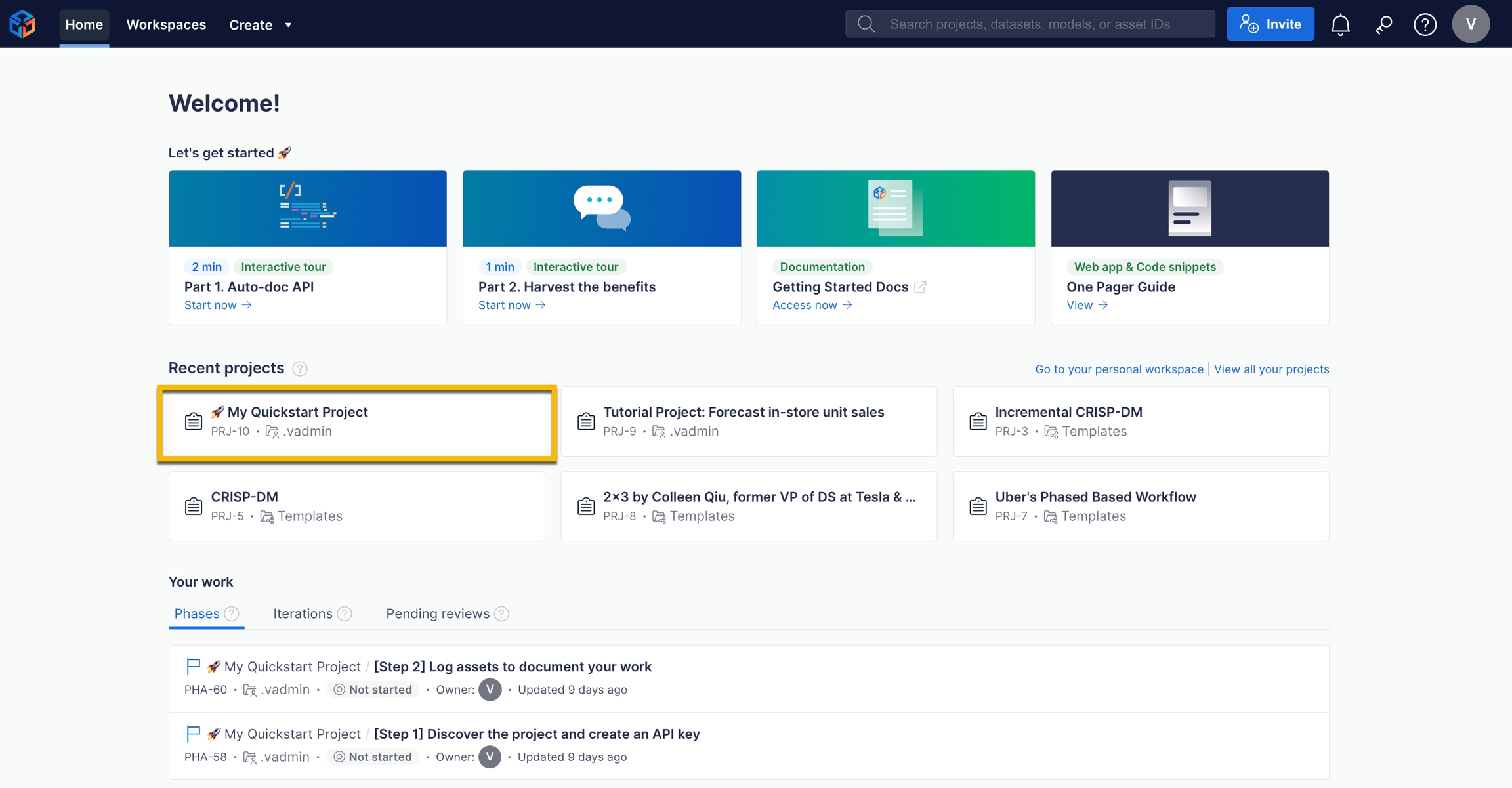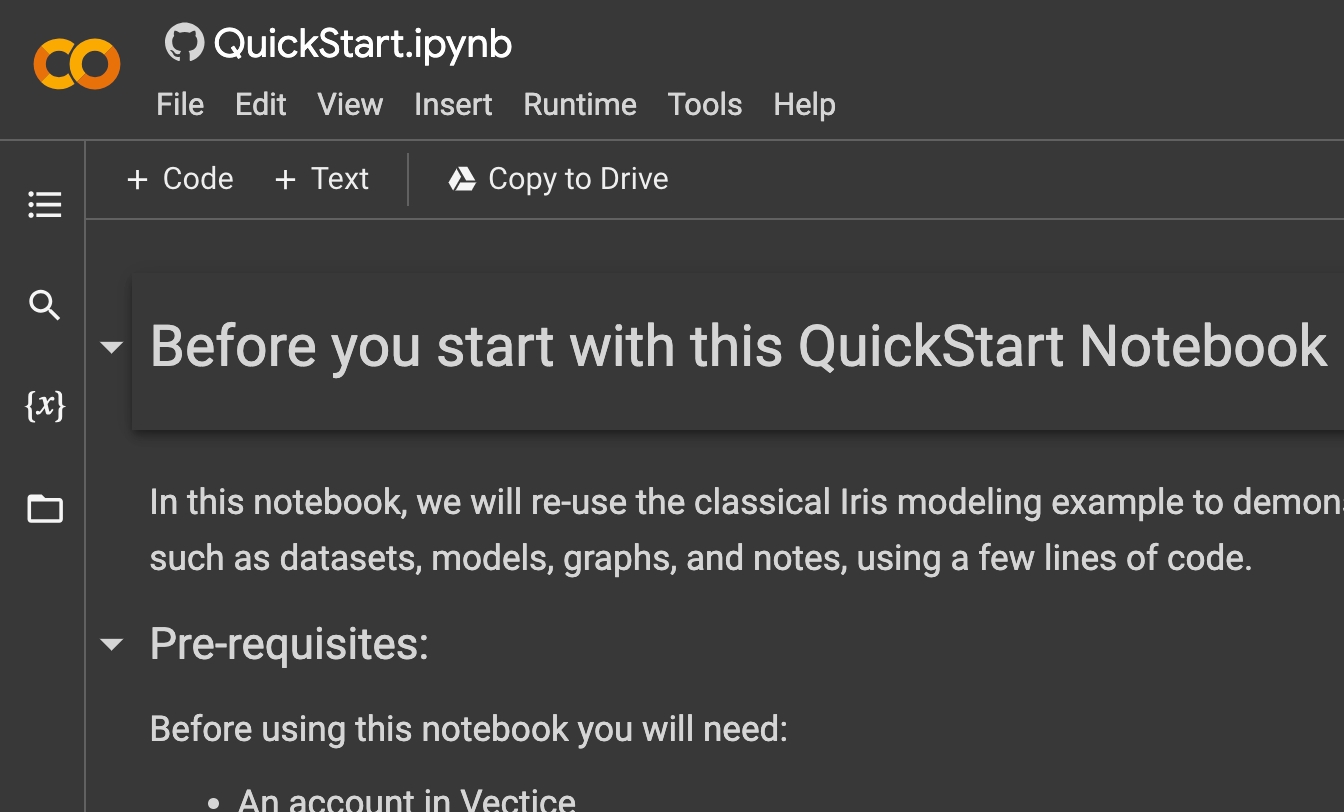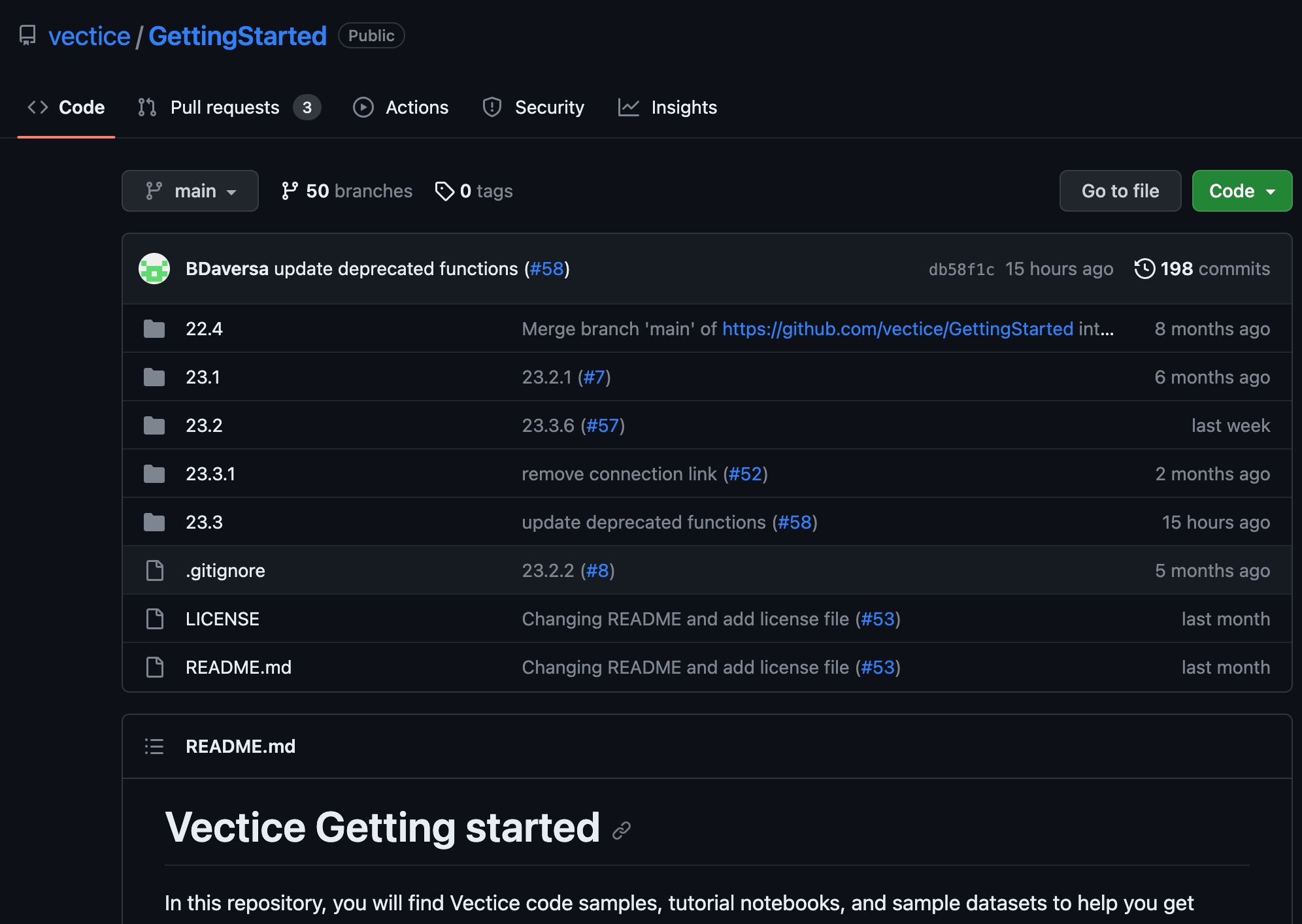Quickstart project
The Quickstart project will show you how to easily auto-document your assets and share your work with your peers and stakeholders.
You will learn how to:
Create an API Key for connecting to Vectice
Connect to Vectice via your notebook and log assets
Document your work for your peers and stakeholders
You can find your Quickstart project on your homepage. After clicking the project, you will find the instructions on how to complete the Quickstart.

Quickstart Notebook
You can explore the Quickstart notebooks to see how easily you can auto-document your assets and share your work.
What's next?
To keep learning more about how to organize phases within your project and more in-depth concepts, go to the next page to follow the more advanced Tutorial Project.

